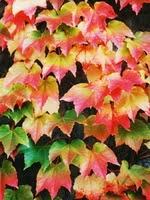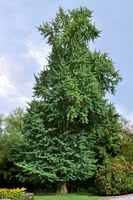Mon-Fri 9am - 5pm Mountain time
Ginkgo Biloba vs Boston Ivy
Parthenocissus tricuspidata
Ginkgo biloba
NOT AVAILABLE THIS SEASON - MIGHT RETURN
NOT AVAILABLE THIS SEASON - MIGHT RETURN
Boston Ivy is an elegant, climbing vine that is often seen as a decorative addition to the sides of buildings. Unlike other climbing vines, this vine does not need a support to grow on. Instead, it clings to surfaces with holdfasts located at the tendril ends.
Boston Ivy is excellent for covering walls, trellises, arbors or fences, but can also be grown on the ground. Don't plant this vine against wood walls, shingle walls, gutters, or shutters as the holdfasts can cause damage over time. This variety will grow as tall and wide as the structure it is grown upon, so make sure you plan your site accordingly.
The Ginkgo Biloba is regarded as one of the most distinctive and beautiful of all the deciduous trees, and has remained genetically unchanged for millions of years. Its beautifully fan-shaped leaves develop a clear yellow colour in fall. Graceful and attractive year-round, Ginkgo is the perfect conversation starter in your yard.
Boston Ivy Quick Facts
Ginkgo Biloba Quick Facts
Toxicity: Uncooked nuts in large quantities

